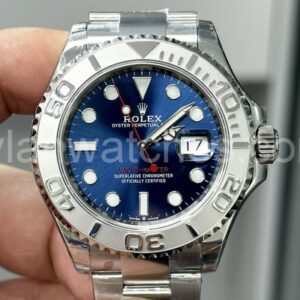How to Make Textile Production More Sustainable

How to Make Textile Production More Sustainable by fabriclore
Are you worried about your clothing’s impact on textile industry pollution? These are five ways that the garment industry is learning to reduce environmental impact and risk while simultaneously expanding its company.
It is more important than ever for clothing producers to consult and de-risk their approaches in order to lessen their negative effects on the environment and secure their company’s future in the face of rising consumer demands and heightened scrutiny of fashion manufacturing processes brought on by fast-fashion trends. The whole textile and garment production process relies on these five factors to be environmentally friendly.
Primary Components
The options for eco-friendly fabrics available to the clothing industry are growing. From the outset, efforts are directed at utilizing organic materials that allow for the decreased or eliminated application of harmful substances like solvents, dyes, and treatment procedures. Most clothing manufacturers now utilize some amount of recycled content in their products. Bamboo, one of the so-called “rapid renewables,” is emerging as a serious competitor to cotton in the textile industry. It requires less watering and washing than equivalent hardwood trees, develops rapidly without pesticides, and sequesters five times as much carbon dioxide as other trees.
Fashion
Integrating eco-friendly design and production processes might help build a name for the business as environmental threats intensify. Producing and marketing designs with greater durability, better functionality, and less resource-intensive production. This procedure may help businesses mitigate the risks associated with rapid fashion and attract new customers. Using natural colors that won’t fade and provide for easy disposal is one example. As is ensuring that all third-party materials and design components are recycled. Most importantly, telling consumers the reasoning behind designs might help them think about their purchases in a more long-term light.
Water
There is a lot of controversy over the excessive usage of water in the textile industry. Although there has been some success in reducing water use by using more eco-friendly materials and methods. The main objective of most companies is to find ways to recycle wastewater back into the production process.
By creating a closed loop cluster and guaranteeing near zero discharge, Waste2Fresh’s method of catalytic degradation and selective separation and extraction processes represents a major advance in converting and scaling solutions to this issue.
Transportation
To lessen their influence on the environment, clothing manufacturers should also implement efficient and sustainable supply chains and logistics. This might include using the most environmentally friendly mode of transportation to get there or shopping locally for necessities. Choose a carbon-neutral delivery partner and utilize recyclable, space-efficient packaging to ensure a thorough approach to de-risking your development. Danish clothing brand “Bestseller” has joined forces with a biofuel-powered, carbon-free delivery company to save the planet. The logistics industry has responded to the demands of the fashion industry by developing specialized services for transporting goods by sea, rail, and road.
From Birth to Death
As was previously said, the whole lifecycle of a garment must be handled. Including the period after it is purchased by the consumer. Whether it’s a lifetime warranty on repairs or a buyback program for customers to recycle or upcycle their old clothing for the next season. However, promoting post-purchase pathways to environmental friendliness can help your company’s image and promote healthy consumer behaviors. Clothing turnover may be reduced by taking simple measures like including thorough care instructions with every purchase. Patagonia, for instance, has used this method by mending 56,000 items of clothing this season and by making 64 percent of its fabrics from recycled materials.
Conclusion
These five groups illustrate the wide range of factors that garment makers must take into account. This is to ensure the sustainability of their business and mitigate the dangers of new product development. It also highlights the importance of the link between businesses and consumers and how open lines of communication can help all parties involved in the textile and garment sector keep up with healthy habits and advance the state of the art.
If you are thinking of getting your clothing collection ready and looking for fabrics for Middle East line then Fabriclore is here. We have exclusive and certified fabrics perfect for you.

